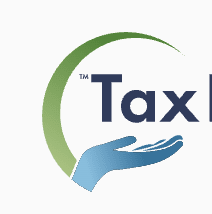
The 1099 form reports non-employee compensation you earned during the tax year, including contract work, bank interest, dividends, and other payments.
Unlike W-2 income, where employers automatically withhold taxes, 1099 income puts the tax responsibility on you. If you're dealing with complex 1099 situations, our best tax relief services can help ensure compliance.
This article will explain how 1099 forms work, the different types, and what you need to know for accurate filing.
What Is a 1099 Form?
“A 1099 form is issued by payers that aren't your employer, and they can apply to anything from interest to dividends to freelance income,” explains Kari Brummond, licensed enrolled agent at TaxCure.
While employers withhold money for taxes from W-2 income, they typically don't do so for 1099 income. That means that you're responsible for paying any taxes on 1099 income yourself, and may be required to make estimated tax payments if you make freelance income.
Types of 1099 Forms
While you may associate a 1099 with contract work, there are several different kinds of 1099 forms for different types of non-employee income.
According to Brummond, the most common 1099 forms include:
- 1099-B: Details capital gains or losses and other proceeds from investment houses.
- 1099-DIV: Reports dividend income from investments and stocks.
- 1099-G: Shows government payments, including unemployment compensation and state tax refunds.
- 1099-INT: Reports interest income from banks and other financial institutions.
- 1099-K: Issued by payment processors such as credit card processing companies like Square or payment transfer services like Venmo.
- 1099-NEC: Reports non-employee compensation for contract and freelance work.
How Does a 1099 Form Work?
You will be issued a 1099 form for any non-employee income you received in a given tax year, according to the type of income and IRS guidelines.
It will include information about the payer, including their business number, and payee, including their Social Security number or EIN, depending on what was provided when you contracted with the company.
When You Receive 1099 Forms
- 1099-NEC forms: Must be issued by January 31 of the filing year for non-employee compensation.
- Most other 1099 forms: Follow the same January 31 deadline for consistency.
- Exceptions: 1099-MISC and 1099-INT forms don't need to be issued until February 28 for paper filings and March 31 for electronic filings.
How 1099 Forms Differ From W-2 Forms
The most important distinction is that 1099 earnings do not automatically have taxes withheld.
- W-2 employee treatment: "Businesses must withhold taxes from payments to W-2 employees, and your W-2 will reflect the amounts withheld for Social Security, Medicare, and income taxes, as well as any other deductions such as health care premiums or contributions to an employee-sponsored retirement account," said Brummond.
- 1099 contractor treatment: "Businesses generally don't need to withhold tax from contractors, and in the rare cases that they do, they withhold a flat percentage of income tax," Brummond explained.
- Your responsibility: Contractors must pay income tax and FICA taxes, including Social Security and Medicare, independently.
How to Verify Your 1099 Form Information
When you receive a 1099, it's critical to compare earnings reported against your own records to ensure accurate reporting to the IRS.
- Check for discrepancies: Compare the 1099 amounts against your income records immediately upon receipt.
- Request corrections: Report any discrepancies immediately and request a new form, alongside a letter outlining the corrections made for tax audit protection.
- If corrections are refused: "Don't report the incorrect income on the 1099 form. Instead, report your correct revenue amount on your tax return and then attach a letter explaining the discrepancy," Brummond advises.
How to Report 1099 Form Income on Your Tax Return
How you report 1099 income depends on whether you file as an individual or a business.
- Individual filers: May report 1099-NEC income as other income on Schedule 1, Form 1040.
- Business filers: Report as business income on Schedule C of Form 1040 (sole proprietors), Form 1065 (partnerships), or Form 1120 (corporations).
"Depending on your financial situation, you may report 1099-NEC income as other income on Schedule 1, Form 1040, or as business income on Schedule C of Form 1040 (sole proprietors), Form 1065 (partnerships), or Form 1120 (corporations)," says Brummond.
Who Gets a 1099 Form?
Many different individuals will receive 1099 forms, depending on the type of income they earned. Each type of 1099 has a different minimum threshold that determines when a form must be issued.
Common 1099 Form Recipients and Thresholds
"Each type has specific requirements," explains Brummond:
- 1099-B recipients: Anyone who disposed of stocks, bonds, or other securities through brokerage houses, even if they had a loss for the year.
- 1099-INT recipients: Those who earned more than $10 in interest from banks, though most banks issue these forms for any amount of interest.
- 1099-NEC recipients: Non-employees who received payments of $600 or more from businesses, but forms aren't required if payments were made with credit cards or issued to corporations.
- 1099-DIV recipients: Individuals who received dividend payments from investments.
- 1099-K recipients: Those who received payments through payment processors like Square or Venmo above certain thresholds.
Bottom Line: 1099 Form
Most tax filers will encounter 1099 forms, whether for interest from savings accounts (1099-INT), investment dividends (1099-DIV), or contract work (1099-NEC). Always verify that the amounts match your records and request corrections for any discrepancies to avoid common mistakes and maximize your earnings.
The key difference from W-2 income is that 1099 earnings don't have automatic tax withholding. If you receive 1099 income, plan to pay taxes directly to the IRS, potentially through estimated quarterly payments to avoid penalties.
Frequently Asked Questions
What is a 1099 form?
Most tax filers will encounter 1099 forms, whether for interest from savings accounts (1099-INT), investment dividends (1099-DIV), or contract work (1099-NEC). Always verify that the amounts match your records and request corrections for any discrepancies.
Who receives a 1099 form?
If you earned $600 or more as an independent contractor, freelancer, or gig worker from a business in a year, that business is typically required to issue you a 1099-NEC. Financial institutions may also issue 1099s for interest (1099-INT), dividends (1099-DIV), or other forms of income.
What happens if I ignore a 1099?
Since the IRS also gets a copy, failing to report it can lead to penalties, interest, or audits. Navigating an audit can be a lengthy process. It’s always safer to report all 1099 income accurately.


